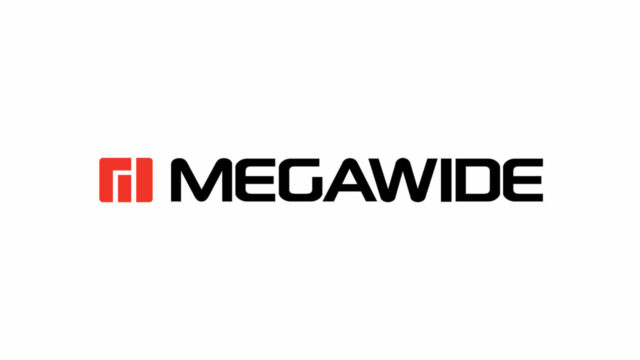Panlasang Pinoy: Influencing homeland tastes from beyond the seas
IF ONE searches for a Filipino recipe on Google, chances are you’ll find Panlasang Pinoy’s website. Sure, cookbooks are available, but as the world goes increasingly digital, so have our references. Vanjo Merano, the website’s founder, has been at it since 2009, making him one of the first to send out Filipino recipes in the digital space.
Through our multiple searches (in writing this story, we realized that we had bookmarked Mr. Merano’s recipes for humba, a pork and salted black beans dish; and sago at gulaman, a Filipino sugar-based drink), we neglected to click on Mr. Merano’s video links, which led to his YouTube channel. We had zero idea on what the person behind the recipes was like (turns out he was a fit 45-year-old man; not the Filipino lola in our internal voiceover), and that he had 6.97 million subscribers on YouTube.
We met Mr. Merano during his introduction as another ambassador of instant food brand Maggi, under Nestle Philippines. Mr. Merano joined Maggi and media guests on a tour of their vegetable gardens at the Department of Agriculture – Bureau of Plant Industry (DA-BPI) center in Los Baños as part of their Sarap Sustansya advocacy campaign on June 5. In a partnership with the DA-BPI, Maggi has helped establish community gardens, with 14 baranggays as beneficiaries in Los Baños, Laguna, alone (they have others around the country). During the tour, the ladies of Brgy. Mayondon showed off crops like squash and beans. In another segment of the program, Mr. Merano helped in the harvest and cooked the vegetables in new ways (we’ve never had pinakbet empanada before), in a way teaching the ladies of the barangay how to stretch the vegetables to create more income (in case they decide to sell some of their produce).
Raine Calma, Service Pillar Head for Nestlé Cream, Carnation and Maggi told BusinessWorld about the partnership with Mr. Merano, “You search anything, a Pinoy a recipe, it’s always his website.”
“Maggi, as a leading culinary brand, (we’re looking for) credible authorities who can help us shape the landscape of Philippine cuisine,” she said in a mixture of English and Filipino. “It’s part of that whole vision that we need an arsenal of creators who are credible in their own fields.”
In a related event on June 7, Maggi and Nestle Cream unveiled their new roster of ambassadors, including restaurateur-chef Myke “Tatung” Sarthou, author of the Simpol Young Chef’s Cookbook*; award-winning pastry chef, dessert connoisseur and Nestlé Homebakers Club expert resource chef Jackie Ang Po; Lalaine Manalo of Kawaling Pinoy; actor and cooking enthusiast David Licauco; actress Barbie Forteza; and Nestle Kitchen Studio Creators Seth Alonzo, Nica Soledad, Sam Bawasanta, and Trish Chua. Mr. Merano joins this roster along with actress Judy Ann Santos-Agoncillo, and comedienne Melai Cantiveros-Francisco.
While Mr. Merano admits that he was once an ambassador for a rival instant food brand, he said, “Our stars aligned. Our goal is the same: to promote nutritious food dito sa (here in) Pilipinas.”
PANLASANG PINOY
Mr. Merano’s website is going on to be one of the best archives of Filipino recipes, and it was all due to bad food. He and his family moved to the US in 2006, and he started the website, then the YouTube vlog, in 2009. In Chicago, “I tried one Filipino restaurant — that taste did not resonate.”
He tried another. “Ito na iyong pinaka-masarap dito? (This the tastiest here?)”
“Nakakahiya sa Pinoy, kung nire-represent natin iyong lahi natin, iyong food natin, like this (it’s embarrassing for Filipinos, if we represent our race, our food, like this),” he said.
Working in the IT field, since he designed websites at a part-time job, he decided to document his own recipes online. “It was more than a hobby: I wanted something to happen. I want to share my recipes so that people will try this, and they can cook Filipino food for Filipinos (first), so they can serve it to their non-Filipino friends who visit their homes.
“Eventually, non-Filipinos, when they search for recipes, they see it, and they try it,” he said.
He’s an IT professional, but the recipes weren’t guesswork. He said that his mother had been a caterer, and he had been cooking since he was 12. “I watched her cook a lot. Mahilig akong kumain (I loved to eat). That’s what sparked my curiosity. I wanted to make menudo, which is my favorite food, and sinigang.”
His recipes are also based on trial-and-error. He goes on a lot of trips to the Philippines, and he visits multiple restaurants to get a taste of what he likes. After that, he forms his recipes according to what he liked, and of course, gets advice from his mother. In another step, he reformulates them to the baseline — a good recipe without frills, extra steps, and sweat. “I want people to not get intimidated. I want to present the simplest form, and I want to spark their creativity as well,” he said.
Mr. Merano is part of the Filipino diaspora, and in a strange turn, his work abroad is influencing the tastes of the Filipinos still in the homeland (that is, if we take it from the Filipinos who look up and replicate his recipes). “I also am surprised. That’s pride for me, to represent Filipino cuisine. I don’t think that it matters that I’m there because I’m Filipino. I was born here. That’s how I feel. Anything that I like, in terms of making dishes, when I imagine it — I just close my eyes, and pretend that I’m in that location.
“Physical lang naman ang location ng US. Your heart, your mind, is still in the Philippines.” — Joseph L. Garcia
* https://tinyurl.com/mwn982sf



















